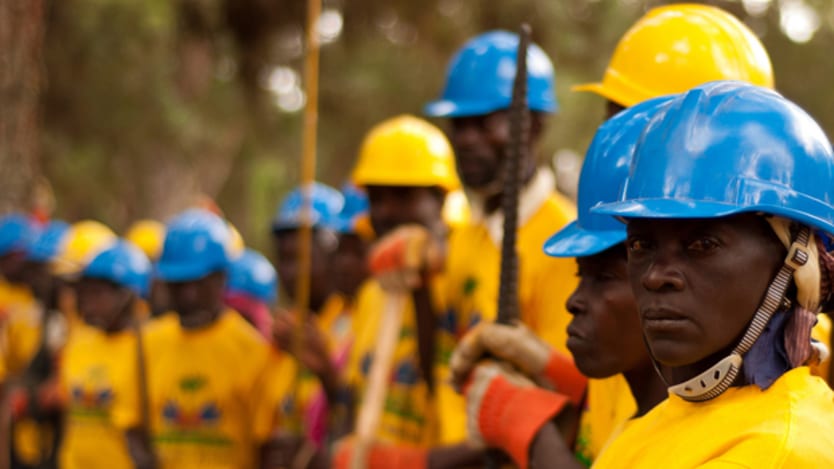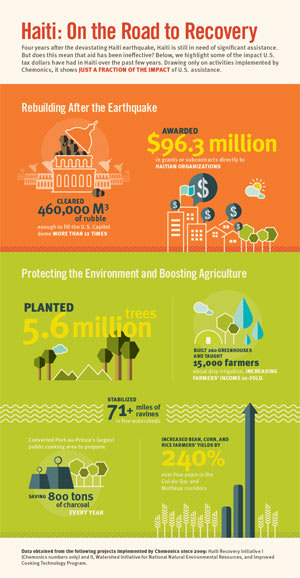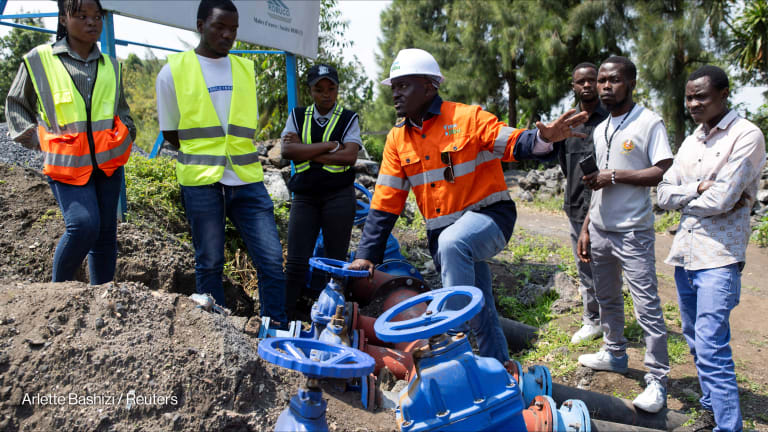
Few areas of international aid have attracted as much criticism in the United States as post-earthquake Haiti. Four years since the earthquake killed thousands of people and displaced millions, no one denies that Haiti is still in need of significant development assistance — but does this mean that U.S. efforts to date have been ineffective?
From 2010 to 2013, I lived in Port-au-Prince and Cap Haitian and directed one of the U.S. government's largest earthquake recovery programs. Helping Haitians rebuild their lives was a massive undertaking. Every organization on the ground faced real challenges that we can and have learned from to improve disaster response. Yet conversations here in the United States about aid to Haiti focus heavily on inefficiencies — real or perceived — related to these challenges, and rarely acknowledge the incredible progress Haiti has made with international support. Critics have skewed the public perception of what is going on in Haiti and the impact of their tax dollars.
Public conversations would be enriched by more insight from the Haitian and international staff who actually led our efforts. Below are the realities behind four misconceptions about U.S. aid to Haiti that have emerged since the earthquake.
1. Haiti’s future prosperity still depends on earthquake recovery.
Critics of U.S. aid to Haiti continue to discuss the humanitarian response to the 2010 earthquake. It’s important to examine what was and was not effective in the response, although this narrow focus does not come close to addressing the scope of Haiti's present challenges and U.S. efforts to solve them.
In the years leading up to the earthquake, Haiti made progress with international support on several fronts, such as public health, food security, reforestation and governance. The earthquake not only exacerbated these challenges, but necessitated an international response to stabilize the country and meet basic needs. The response dominated aid for a time, until Haiti stabilized and re-focused its energies on addressing the more systematic and long-term challenges to its development.
Problems with no quick and easy solution, such as food security, public health, and economic growth, continue to define Haiti's future prospects. As the majority of U.S. aid focuses on these challenges, they should be a bigger part of informed conversations about Haiti's future and the delivery of aid.
2. Failures of US aid to Haiti outweigh successes.
As most Haitians and expatriates who have worked on foreign aid programs in Haiti will tell you, despite seemingly insurmountable challenges, U.S. aid has had an enormous impact in recent years, including in the earthquake response. Reports, assessments, and third-party evaluations of USAID programs available online (such as the final third-party evaluation of USAID's largest earthquake recovery program) provide a fuller picture than critics do and reveal that claims about "failure" in Haiti are greatly exaggerated.
Both the successes and challenges of U.S. aid to Haiti are spread across many organizations. My employer and USAID partner, Chemonics International, has been active in Haiti since 1988 and is one of the primary implementers of post-earthquake assistance. Drawing on activities implemented by Chemonics, the graphic below shows only a fraction of the impact of U.S. assistance.

3. Haitians are excluded from the design and implementation of aid programs.
The idea that U.S. agencies and partners parachute into Haiti with preconceived solutions contradicts the enormous contributions of Haitians to U.S. development programs, both as the staff driving programs and as partners in the design, implementation and monitoring of activities.
Case in point, more than 90 percent of the staff on USAID's two largest Chemonics-implemented programs are Haitian. Despite personal tragedy, they have developed home-grown solutions for the recovery and other development goals. Many of them serve in key leadership positions. The director of one of USAID's largest agriculture development programs in Haiti is Haiti's former ambassador to France, who served in the Haitian government for 20 years.
I'm also proud to report that Chemonics has awarded $96.3 million in grants and subcontracts directly to Haitian organizations over the past five years, and that we have invested in teaching these organizations to manage funds and get results. We also consult closely with Haitian communities, organizations and government agencies to design activities. The main U.S. earthquake recovery program worked so closely with local communities that the former prime minister of Haiti, Jean-Max Bellerive, said: "This project made an extraordinary difference to have this type of coordination, cooperation, and dialogue with the recipients of the project. At every step, they wanted to be sure that it was exactly what we wanted."
Inclusiveness is not always easy, but experience shows that it enriches development efforts and is essential for sustainability. For this reason, it has become a top priority for development organizations across the globe.
4. Little of the funding for the recovery effort actually reached Haitians.
You've heard it before. Wherever U.S. tax dollars go to help those in need, Beltway contractors will be there to siphon away as much as possible with little regard for the poor people of developing countries. In recent years, critics of aid privatization have targeted U.S. earthquake response in Haiti and used such assertions to explain why it has been a wasted investment.
For all the criticism, USAID contracting is in fact competitive and highly regulated to ensure aid reaches beneficiaries. Successful contractors need to pitch competitive cost structures that demonstrate high returns on investment for the U.S. government. Partners chosen to implement projects are legally bound to strict monitoring and evaluation requirements and must comply with routine performance and financial audits as part of the government's oversight of all its contracts. Successful partners in this environment prioritize strict compliance and invest in systems to ensure it.
Against this backdrop, 81 percent of the U.S. funds spent on Chemonics' projects in Haiti since 2009 have directly supported the implementation of development activities for Haitians. This includes the $96.3 million awarded as grants and subcontracts to local organizations. The remaining funds have made it possible for highly skilled professionals in our main office, such as compliance officers, project managers, financial analysts and grants experts to support those programs and ensure that U.S. taxpayers see results.
Finally, regarding the accusation that development contractors lack integrity, the Haitian and international staff who worked with me in post-earthquake Haiti cared deeply about the recovery. Despite having suffered personal tragedy, they worked tirelessly to be a part of the solution. In my experience, whether working for an agency, contractor or nonprofit, educated people with many careers options are drawn to international development for the same reason: they care about making a difference in the lives of others.
Join the Devex community and access more in-depth analysis, breaking news and business advice — and a host of other services — on international development, humanitarian aid and global health.








